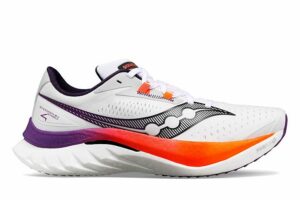4 tips for my younger running self
I'd love to give myself these pointers

One of the most enjoyable things about running is that over time and with consistency, you inevitably improve. If you’re anything like me, you probably also dive deep into the literature about the sport, discuss running with anyone who will listen and try out new techniques and training tactics. If I had the opportunity to go back a decade or two, here are a few things I would tell myself.
Running slowly is a skill; do it most of the time
When I started focusing on the marathon, I made the rookie mistake of thinking I should complete the majority of my workouts at my marathon race pace. Astoundingly, I didn’t get injured, but I also wasn’t optimizing the time I spent training and most certainly put myself at risk of injury.
Years of experience, reading, working with a coach and several coaching certifications of my own later, you’ll find me running at a fairly slow pace most days. I try to kick it into high gear with speed or long runs about 20 per cent of the time. The benefits of running at an “easy” pace (for most of us, a pace you could maintain for a long time) are numerous: less recovery time required, better fat oxidation and not feeling beaten and battered are enough to convince me to keep it slow. Be warned: it’s hard to get used to and everyone hates it at first!
Data is a fun tool, but don’t obsess over it
Strava, RunKeeper, the info your wearable device gives you daily: that’s fun stuff. It’s enjoyable to check in on other athletes and marvel at professional runners on Strava and their seemingly impossible workouts. It can also be addictive, stress-inducing and something that you should step away from when it becomes all-consuming. With constant updates and new features, it can be hard to take a break.
If you find that you are feeling upset over info on Strava, remember that your watch or chest strap doesn’t portray the whole picture. Important easy runs may not be showered with kudos, and if that’s something that is causing you to quicken your pace, try making your settings private for a while.
This is not a drill!Video is officially launching on Strava ?. Now, you can bring more action and behind-the-scenes views to the activities you share with the community.Over the next few weeks,this feature will be rolling out for all athletes. Learn more: https://t.co/n1CId1QXEe pic.twitter.com/9K3ZyIrTGx
— Strava (@Strava) June 15, 2022
Professional athletes like Molly Seidel have commented on similar issues with their data, and have advocated taking a break.
As a coach, I’ve approached athletes I have noticed are running far faster or more than they are scheduled to, and had them explain that they’re doing it because it looks cool on Strava. Hindering your recovery process and risking potential injury is not worth a few thumbs up on an app.
You are capable of far more than you imagine
As a middle-distance track-and-field and cross-country runner growing up, training for and running my first marathon felt like an epic feat. When I tackled my first ultra, it was only to check a 50 km race off my bucket list. I was hooked, but completing 50 km was so challenging that I couldn’t imagine finishing a longer distance.
When I first learned that people ran the entire 125 km of the Canadian Death Race solo, I was in awe. Since my first ultra a few years ago, I’ve completed more than a dozen ultramarathons, including multiple 100 km races and a recent (and fun!) 100 miler.

Long-term consistency outweighs short-term gains
Getting out the door in all kinds of weather and putting miles in the bank is often not glamorous (and sometimes not that fun). It can be hard to work up enthusiasm to head out for yet another cold winter run, or to keep putting in the workouts in a training plan even when you aren’t feeling motivated. Above all, simply lacing up your shoes and doing the work is what will help you improve.
1. Consistency trumps all else.
Good, solid consistent work stacked month after month, year after year is what leads to better performance.
You can’t skip steps. It takes time. What’s that mean?
Do whatever you can while being healthy with over the long haul
— Steve Magness (@stevemagness) February 16, 2022
Running, like life, has no shortcuts. Brendon Leonard, author of I Hate Running and You Can Too, suggests that the challenges of maintaining a consistent running practice benefit the rest of our lives as well. Leonard says: “Over the long term, after you put yourself through a good amount of discomfort for a few minutes or hours at a time, a couple times a week, something else happens: you build a higher tolerance for pain and challenges in other aspects of your life.”
Whenever I have to tackle something challenging in my personal life, I remind myself that I can run 100 miles in 24 hours, and I feel just a little bit stronger and more capable.


